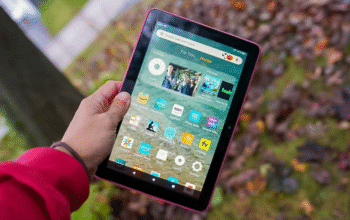Many individuals are curious about how much it will cost to create an Android app. Although creating an app can be fun, the costs can mount up rapidly if you’re not careful. Anyone hoping to design a successful Android app must understand the factors that influence the cost of app development. The various factors that influence the cost of creating an Android app will be discussed in this article.
1. Complexity of Apps
An Android app’s complexity dramatically impacts how much it costs to produce. How intricate and extensive your app will be is called its complexity. Creating simple software with fewer functionality, like a calculator or to-do list, is less expensive than building a more intricate app with many capabilities.
For instance, developers must invest more time and energy into creating a social media app or a game with intricate graphics at several levels. The total cost may rise due to the additional programming and design work required. When you plan it, think about how your budget will be affected by how complex you want your app to be.
2. Features and Capabilities
The features and utility of your program also have a significant influence on its cost. Features are the various tasks your software may complete, such as sending messages, utilizing GPS, or checking in. Common traits that could affect the cost are as follows:
Common traits that could affect the cost are as follows:
- User registration and login:
If your software asks users to register, this will increase the time and expense of development.
- Setting up in-app purchases:
It will take more effort if you intend to sell goods or features inside your app.
- Push notifications:
Can be sent to consumers to keep them interested. This functionality needs further code to be implemented.
- Integration with Social Media:
Including social media sharing on sites like Facebook or Instagram will also raise the development cost.
Make a list of the features you want in your app before you start, and consider how each will affect your budget.
3. User Experience and Design
The success of your app is greatly influenced by its design. An app with a robust design has a higher chance of drawing in and retaining users. However, designing an aesthetically pleasing design that is easy to use might also raise the final cost.
Among the elements that affect design costs are:
- User Interface (UI):
This is the appearance of the application. A distinctive and expert design will cost more time and work.
The term “user experience” (UX) describes how easy it is to utilize a program. More investigation and testing will be required if you want a seamless and pleasurable experience.
- Animations and Graphics
While high-quality animations and graphics can help your app stand out, they can also add to the time and expense of development.
Investing in a well-designed app is crucial because it may significantly impact how consumers view it.
4. Device and Platform Compatibility
Numerous gadgets, such as tablets and smartphones, can run Android apps. The development cost may vary depending on screen sizes and operating system versions. It will take more time for the developers to test and optimize your software for each device if you want it to function smoothly across various of them.
Additionally, the expenses will go up much higher if you choose to make an app that works with iOS and Android (Apple smartphones), as developers would have to build different code for each platform.
5. Location of the Development Team
The location of your development team might also impact the cost of creating an Android app. Businesses in various nations frequently charge varying prices for their services. For instance, Hire a team in Western Europe or the United States can be more costly than using one in the Philippines or India.
Even if it could be alluring to choose the less expensive choice, you should consider the caliber of the work you will get.Always try to find a balance between cost and expertise level.
6. Methods of Development
Costs may also be affected by the development methodology you select. There are various methods for creating apps, including:
Before moving on to the next phase, developers complete the previous one using the classic waterfall technique. It may cost more and take longer.
This method allows developers to make adjustments and is more flexible. Faster outcomes may be achieved, but more regular contact and modifications may be necessary, which could raise expenses.
Making the correct approach for your app might help you better control your spending.
7. Upkeep and Modifications
The expenses don’t end when your software is created and released. Regular maintenance and upgrades are required to keep your program functioning correctly and address potential bugs. When planning your app’s budget, this is a crucial consideration.
Maintenance-related expenses may include:
Bug fixes: If users run into bugs, developers must deal with them, which may take more time and money.
New Features: To keep your app competitive, you should introduce new features as customer demands and technology develop.
Regular compatibility updates will be required to ensure your software is compatible with new Android versions and devices. To ensure your app is successful over time, you must budget for recurring expenses.
Conclusion
In conclusion, complexity, functionality, design, and continuing maintenance are just a few of the variables that might impact the price of creating an Android app. A deeper understanding of these components will enable you to make wise decisions and more accurately estimate your budget during development.
If you want to create a fantastic Android app, think about working with the best Android app development company. They are qualified and experienced to guide you through the development process and ensure your app fulfills your requirements. Your app idea might become a successful reality if you have the proper team!








